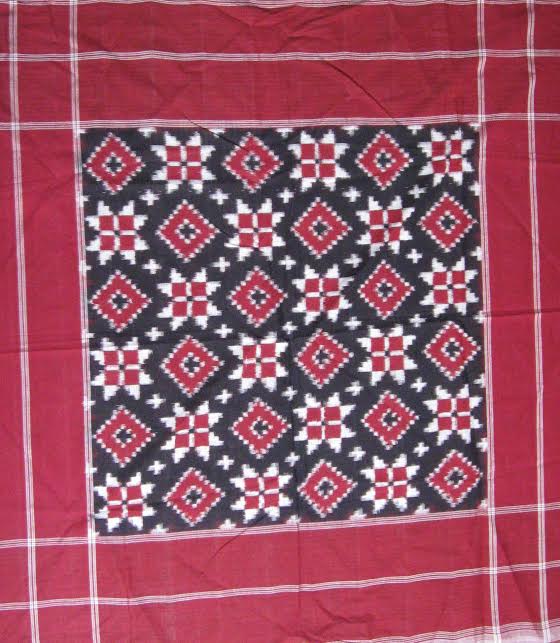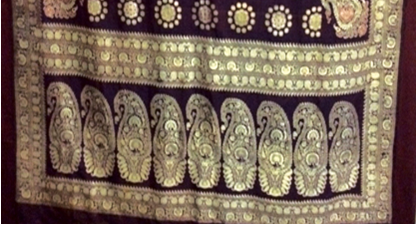
Art history/ Historiography, Crafts, Handlooms, Art
Fraying threads: The Telia Rumal Of Andhra Pradesh
Turaga, Janaki
October, 2014
The younger weavers, in turn, had only heard of the older weavers having woven them and many had not even seen a Telia Rumal.
The stunning Telia Rumal was initially woven mainly in Chirala in Andhra Pradesh in the 19th and 20th centuries primarily as a trade cloth for export to Arab countries where the square 44 inch by 44 inch oil processed cloth was in much demand. Locally, it catered to fishermen and agricultural labourers who wore it, as it kept them warm in cold weather and cool in hot weather. It was also woven as sarees and dupattas which were further embellished with embroidery by the niche women clientele of Hyderabad.
Post-Independence, the decline in exports led to the decline of the thriving production centres in Chirala and Pochampalli. The subsequent decline could not be arrested despite significant government interventions in 1950s by Kamaladevi Chattopadhyay and the Festival of India in the 1980s. Despite a dramatic revival and a two-decade boom period from 1980 to 2000, due to the design intervention of Festival of India through Viswakarma exhibitions, its subsequent downswing post 2000 has been remarkable.
One of the most intricate double ikats, Telia Rumal is characterised by a special yarn preparation process which gives its unique character. The preparation of the yarn before the dyeing process involves the treatment of the yarn with sheep dung, castor pod ashes and sesame oil over a month. At the end of the process the yarn has a slight oil smell and sheen which gives its name “Telia Rumal”.
Its one-of-a-kind design repertoire demands th...
This is a preview. To access all the essays on the Global InCH Journal a modest subscription cost is being levied to cover costs of hosting, editing, peer reviewing etc. To subscribe, Click Here.
ALSO SEE
Palchoudhuri, Ruby



